Last Updated on December 6, 2023
Believe me when I tell you that many coffee beans were sacrificed to bring you these 63 bits of coffee trivia. It required some late nights and a lot of brew. But I wasn’t interested in putting another list of thinly sourced coffee facts out there into the world.
For this coffee trivia, I dove deep into university libraries and academic papers to verify some of the dubious claims that are out there. If I couldn’t verify them, I tossed them aside.
It turns out the story of coffee is even more fascinating that I had anticipated. I drank a lot and I learned a lot. I hope you will, too. Let’s get to it.
Melitta coffee filters make great medical masks
During the COVID-19 pandemic of 2020, German company Melitta redirected its efforts from making coffee filters to making medical masks.
The company, whose filters were invented in 1908 by a Dresden housewife named Melitta Bentz, realized that the filters were the perfect shape to fit over a person’s mouth, nose and chin. All they had to do was replace the filter paper with a special melt-blown fiber normally used in their vacuum bags, then attach an elastic. The systems they already had in place allowed them to manufacture a million masks per day, which provided a big boost to Europe’s mask supply.
Melitta, the German maker of the original paper coffee filter, retooled its production to make masks. A director called the filter’s fit over the face “a gift from heaven.” https://t.co/hj57WCtxcS
— The New York Times (@nytimes) May 10, 2020
The first webcam watched a coffee pot

When somebody brewed coffee in the computer lab at the University of Cambridge in the early 1990s, the coffee went fast. So fast, in fact, that they decided to set up a camera. This allowed people whose desks were far from the machine to watch it on their computers and get there in time for a fresh cup. This began as an internal thing, but eventually they hooked it up to the World Wide Web so people all around the world could watch the coffee brew. After the $100 machine broke down in 2001, the students sold it on eBay for about $4,800 USD.
140 litres of water go into each cup of coffee
That’s about half a bathtub, and no, it doesn’t all go into the coffee cup. Rather, you need 140 litres of water to grow enough beans to produce one cup of coffee.
Brazil produces about one-third of the world’s coffee
In 2018, Brazil produced 3.6 billion kilograms of beans, which is more than twice as much as any other country. (Vietnam was second with 1.79 billion.) In about half a century between 1800 and 1852, Brazil’s coffee production went from virtually nothing to No. 1 in the world, a position it has held for the past 168 years.

People bathe in coffee at a Japanese spa
Of all Japanese contributions to coffee culture, this is probably the strangest. Hakone Kowakien Yunessun Spa and Resort in Japan has a pool of coffee that guests can bathe in. Fast forward to the 40-second mark of the video for verification.
You can visit the site of England’s first coffeehouse
The Grand Cafe, a cocktail bar in Oxford, now occupies the site where England’s first coffeehouse was established in 1652. Within 25 years, England had 3,000 coffeehouses. Then, a paranoid King Charles II banned them.
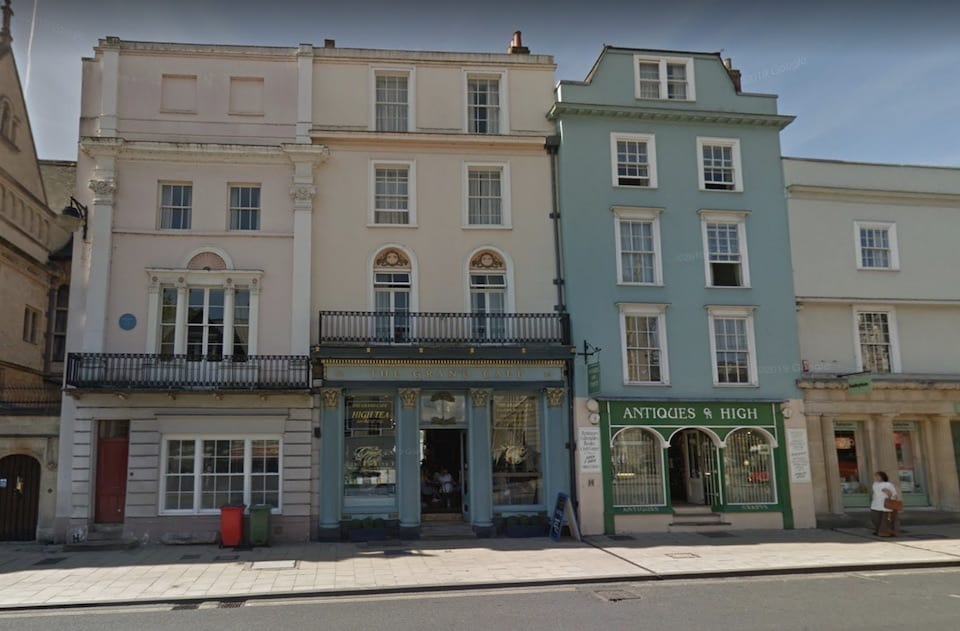
Coffee has been banned many times, in many places
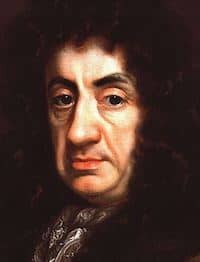
Mecca banned coffee in the 16th century because they believed it inspired radicals. Nevertheless, Catholic clergy viewed it as a Muslim drink (Satanic, in their view) and asked Pope Clement VIII to ban it. The pope tried it, and liked it so much he had it baptized, jumpstarting its popularity in the Christian world. In 1675, King Charles II of England banned coffeehouses because he believed people gathered there to plot against him. The idea wasn’t so far-fetched: both the American and French revolutions were plotted in coffeehouses.
Starbucks used to be called Il Giornale
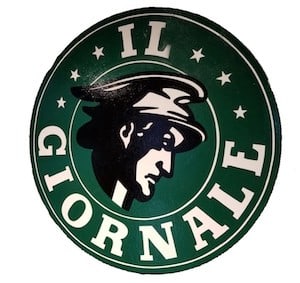
To be clear, Starbucks the roasting company was always called Starbucks, but its first café in Seattle was called Il Giornale. Longtime CEO Howard Schultz opened the café in 1985, serving coffee made with Starbucks beans, because he thought cafés were the company’s future. His business partners, who had founded Starbucks as a roasting company, disagreed. Schultz bought them out in 1987 and began opening cafés to his heart’s content—an average of two per day for the next decade. He called them Starbucks.
A coffee bean isn’t a bean, it’s the pit of a fruit
Coffee beans are actually seeds, which come from the inside of a fruit very similar to a cherry. In fact, they are often called coffee cherries. The plant’s scientific name begins with the genus Coffea, followed by the species. For example, arabica beans come from the Coffea arabica plant. Its pits are cleared of fruit and dried before being shipped away for roasting. (Do not try this with actual cherries.)
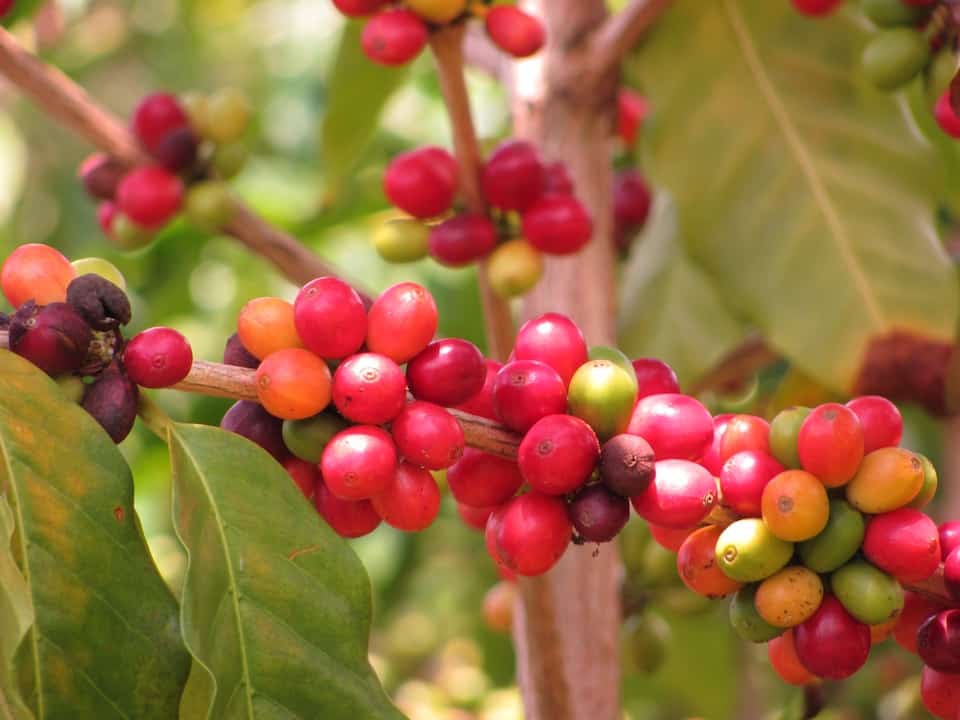
The Coffea genus is native to tropical East Africa
Coffea arabica grows wild in the forests of the Ethiopian highlands. That’s where it all began. The nearest coastline is the Bab al-Mandab Strait, a 30-kilometre crossing between Africa and the Arabian peninsula where the plant was first cultivated and traded. It spread from there to the Middle East and Europe.
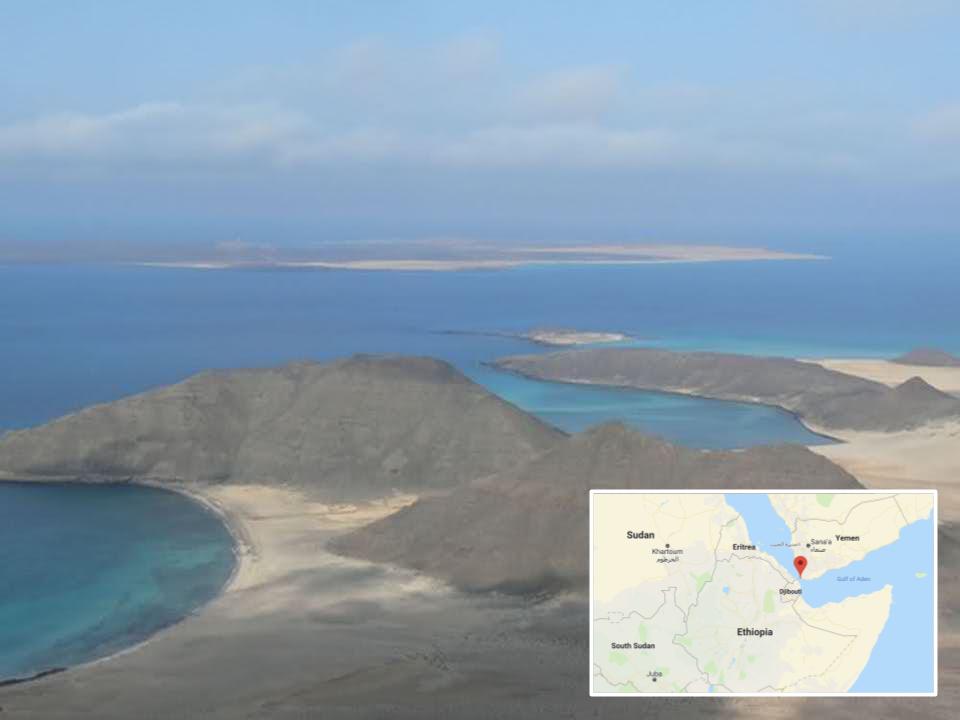
There are two theories about the origin of the word “coffee”
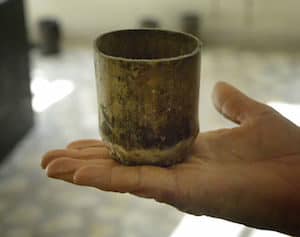
The part of Ethiopia where wild coffee originated was called the Kingdom of Kaffa from the 14th century onward. That may be where the drink gets its name. Another theory says that the Arabians who first popularized coffee named it qahwah after one of their ancient drinks that was similar to wine. Qahwah became kahve in Turkish, then koffie in Dutch, and finally coffee in English.
Robusta beans contain twice as much caffeine as arabica
Arabica beans may be more highly prized for their taste, but they can’t beat the caffeine kick of robusta. Robusta beans, grown primarily in Africa and Indonesia, contain almost double the caffeine of their arabica cousins—just under three per cent, to 1.5% for arabica. This extra caffeine also helps make robusta easier to grow, because it turns off some pests.
The world’s most expensive coffee comes from elephant dung
Black Ivory coffee costs more than $500 per pound, or $50 per cup. The beans are sourced from the poop of elephants in Thailand, after they’ve eaten coffee cherries and excreted the pits. The elephants’ digestive enzymes are said to transform the compounds in the beans. It’s not a new concept—for many years, Kopi Luwak coffee sourced from the feces of civets was regarded as the world’s priciest.
Haiti once supplied more than half the world’s coffee
The year was 1790, and Haiti—then a French colony known as Saint-Domingue—had a booming coffee industry built on the backs of African slaves. It supplied more than half of the world’s coffee. The slave revolt of the following decade led to the Haitian Revolution, and the coffee industry declined soon after. Haiti’s production is now about 30th in the world.
Bach wrote a comic opera about a coffee addict
In 1732, composer Johann Sebastian Bach wrote a comic opera called Coffee Cantata about a coffee-crazy young woman whose father tries to come between her and her coffee.
The Boston Tea Party taught Americans to love coffee
A tea tax imposed by the British government in 1773 not only led to a raid on tea ships in Boston Harbor and the American Revolution, it also paved the way for coffee. During and after the revolution, many Americans considered drinking tea to be unpatriotic and switched to coffee. Many never went back. Today, the U.S. consumes more coffee than any country in the world.
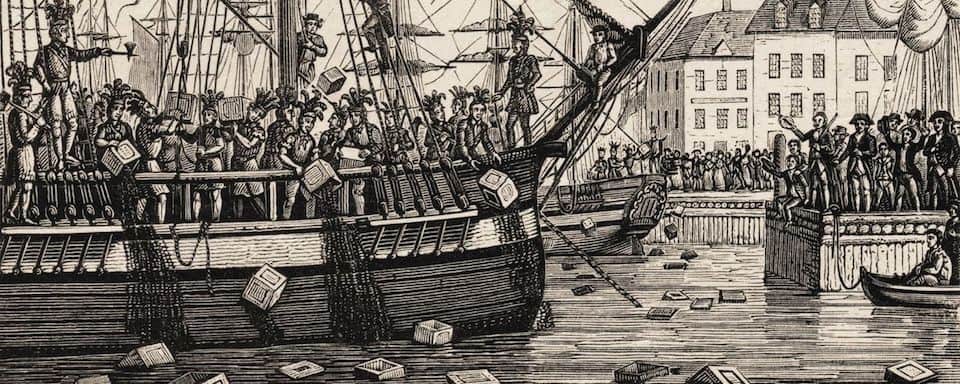
Only two U.S. states produce coffee
Hawaii, famous for its Kona coffee, had long been America’s only coffee-producing state. But since coffee plants were introduced to California in the early part of this century, the state’s industry has grown to 30 farms, including the Good Land Organics farm in Goleta below. Puerto Rico, a U.S. territory, also has a coffee industry.
Maxwell House made coffee kosher

In 1923, nobody was really certain whether coffee was a bean or a fruit. Beans and legumes were not kosher, so they were forbidden for Passover. The marketing guy who worked with Maxwell House, Joseph Jacobs, persuaded Orthodox Rabbi Hersch Kohn to classify coffee as a fruit, making it kosher. A few years later Maxwell House produced its first Haggadah, a sort of Passover reader containing prayers and hymns, which is still distributed. It is the longest running content-marketing play in American history.
Coffee has fueled some of London’s buses
A UK company called bio-bean partnered with Shell on a project to turn coffee grounds into biodiesel. The fuel worked without any modifications to the buses. Bio-bean now makes “coffee logs” out of recycled coffee grounds, for use in fireplaces and wood stoves.
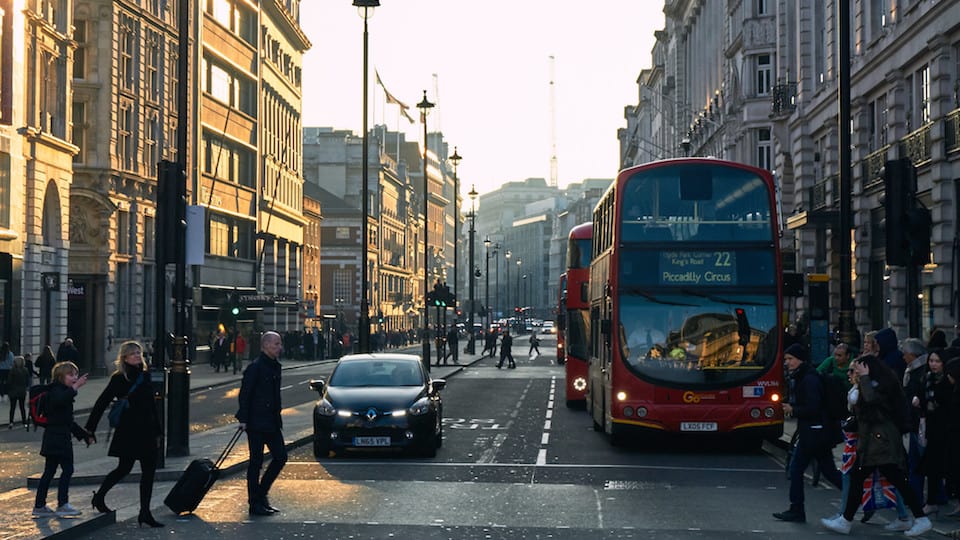
A 19th-century French novelist consumed the equivalent of 50 cups per day
Novelist and playwright Honoré de Balzac is said to have ground coffee beans and ingested them directly to fuel his writing. An Ontario-based chain of cafés now bears his name.
Coffee was a component of early energy bars
In the Middle Ages, the Oromo people of Ethiopia would grind entire coffee cherries, including the pits, with a mortar and then mix it with animal fat to create a paste that could be compressed into bars or balls. These snacks became high-energy, high-protein food for their warriors during raids. Today, dried coffee fruit is known as cascara and is used to brew tea.
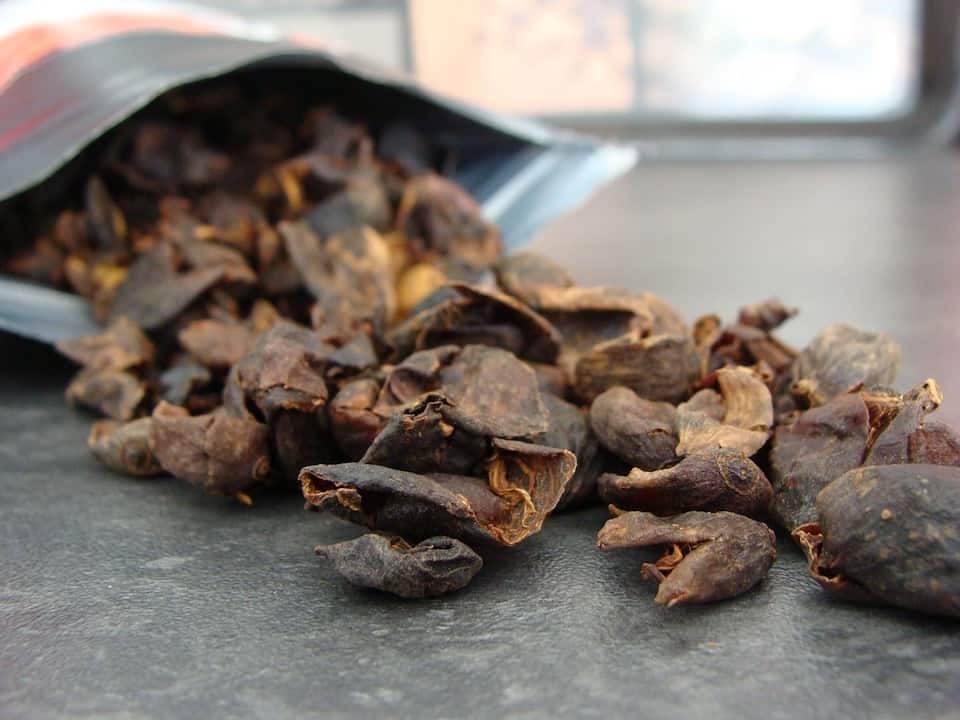
Humans drank coffee as we know it as early as the 15th century
You may hear stories of a ninth-century goat herder in Ethiopia discovering coffee when he noticed how hyped up his goats became after eating the berries. However, that story’s origins—and legitimacy—are unknown. The earliest documented evidence comes from Sufi monasteries in Yemen, at the bottom of the Arabian peninsula.
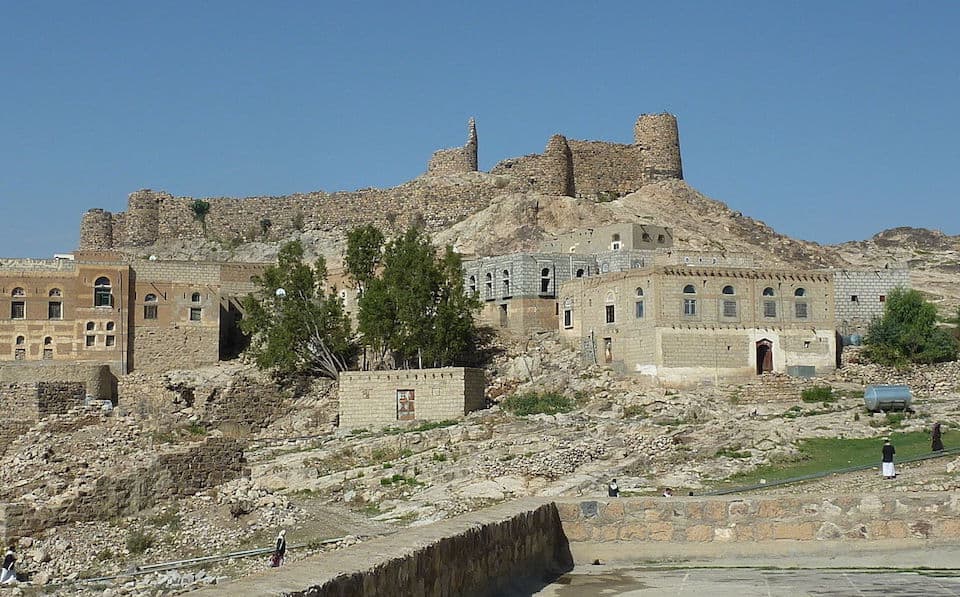
Mocha Java was the first coffee blend
In the early days of coffee, Yemen and Indonesia were the two regions that grew most of it. Ships would collect beans from the port of Mokha in Yemen, and the port of Java on the island of the same name in Indonesia, all on the same trip. While the chocolatey drink we now call mocha takes its name from the Yemeni port, Mocha Java is actually just regular coffee made from a blend of Yemeni and Indonesian beans.
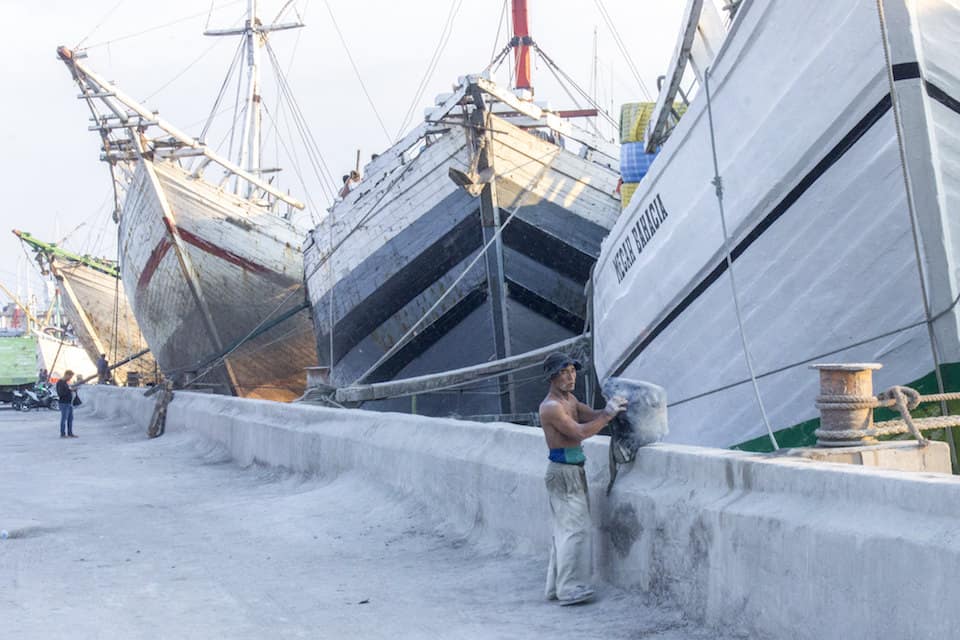
Vietnam multiplied its coffee exports by six in a seven-year period
Vietnam exported about 150 million kilograms of coffee in 1994, when the U.S. lifted its trade embargo against the country. Seven years later, Vietnam exported 900 million kilograms, a six-fold increase. That number has since risen to more than 1.7 billion kilograms, second in the world.
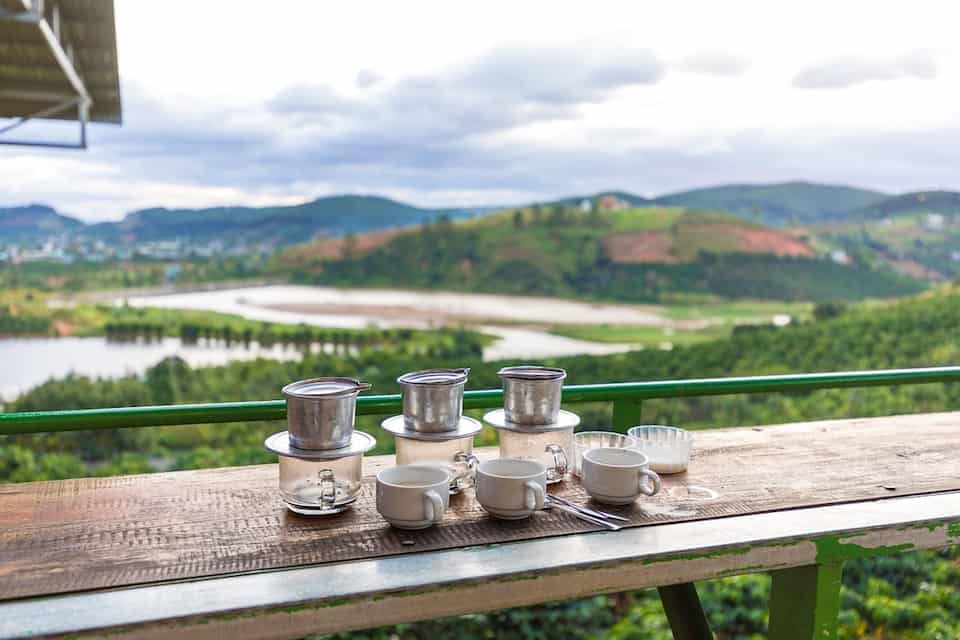
More than 70 countries now cultivate coffee
The common thread among coffee-cultivating countries is that they all lie at least partially between the tropics of Cancer and Capricorn, and they all have mountains.
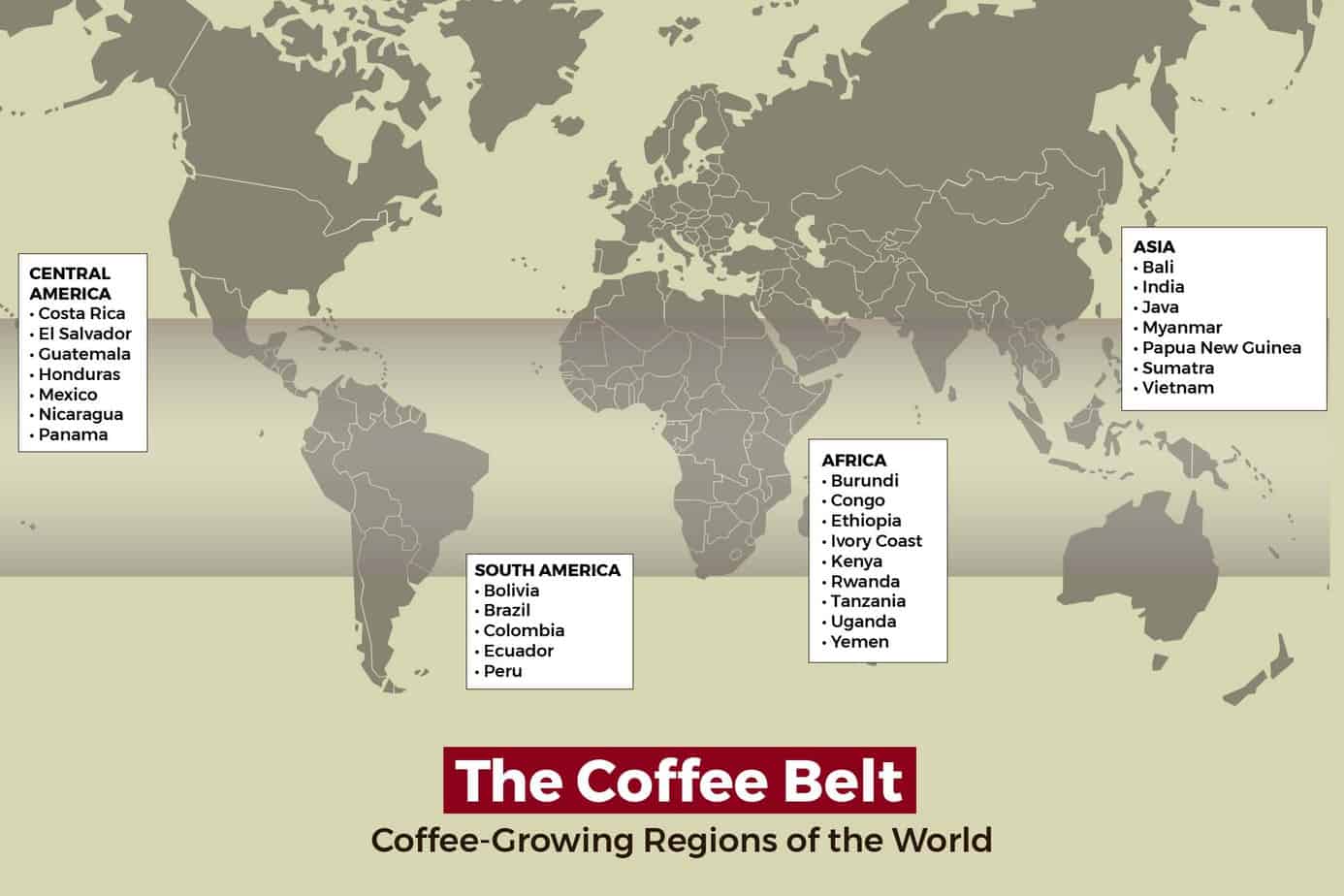
The Dutch drink the most coffee
According to this Statista graph based on 2020 data, the Netherlands consumes more coffee per capita than any country in the world, about 8.3 kilograms per year. Americans average only 3.5 kg. Coffee consumption is highest in the northern climates, as the top five coffee-drinking countries tend to also excel at the Winter Olympics. Coincidence? We think not.
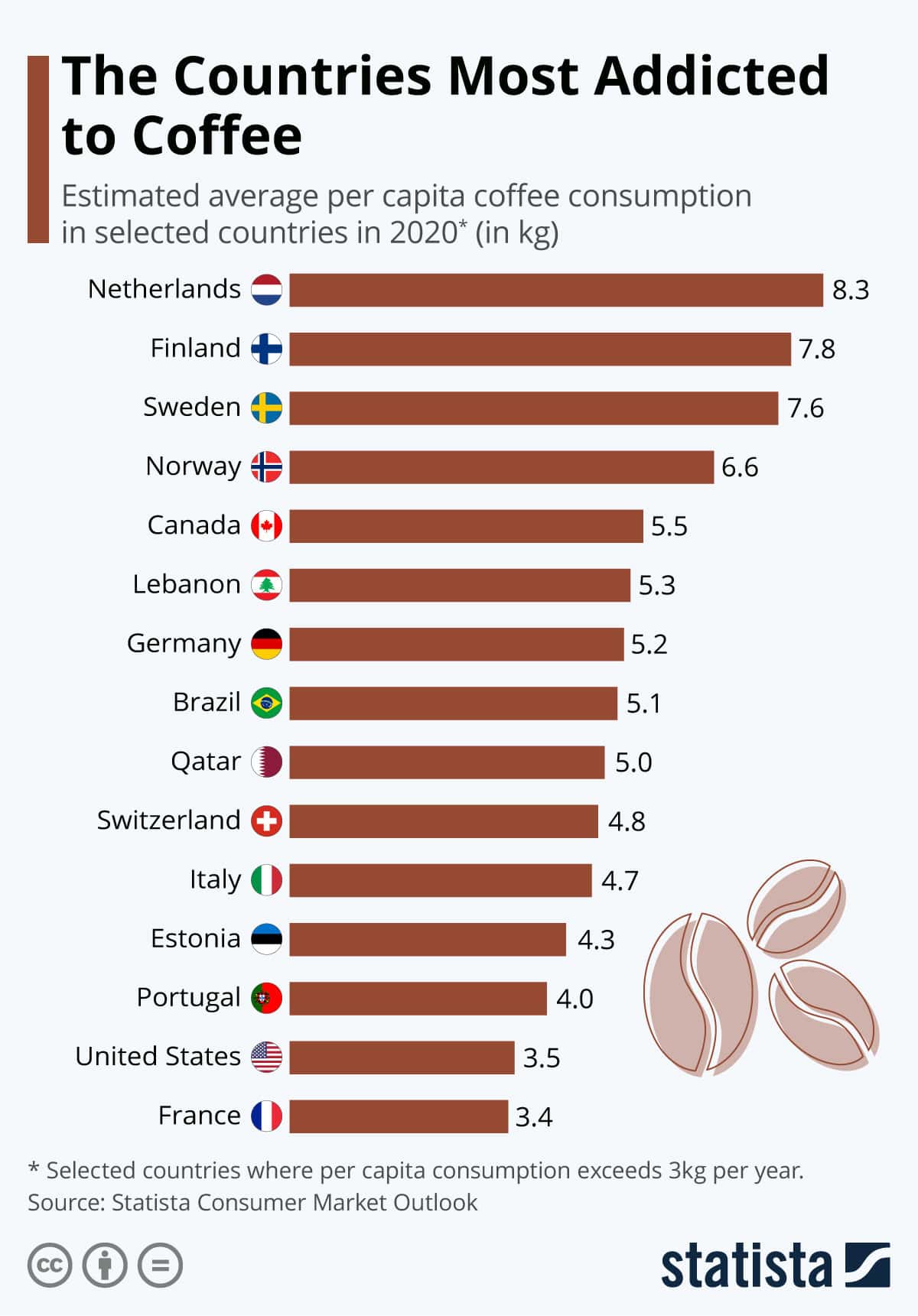
The CIA has its own Starbucks
This Starbucks in Langley, Virginia, might be the only one in America where baristas never write their customers’ names on their cups. When you work for the CIA, sometimes you want to go where nobody knows your name.
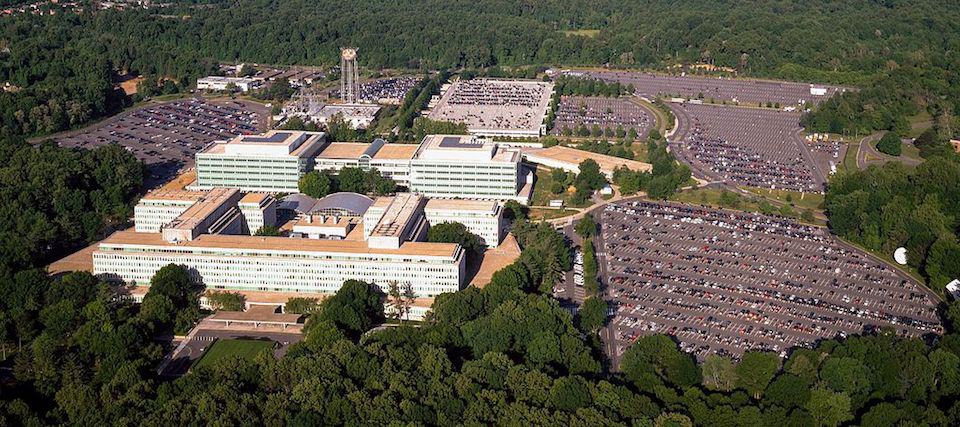
Cappuccino is named after friars who wear hoods
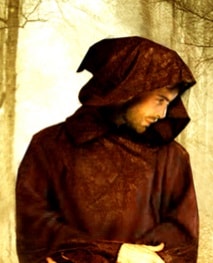
An order of Catholic friars in Italy have long been known for their brown robes with pointed hoods, or cowls. Children would spot the friars passing on the street and call out “Cappuccino!” which meant “little hood.” They became known as Capuchin friars. The drink later took the name—some say because of its colour, others because of its pointed peak.
Global coffee prices are plummeting
The price of coffee as a commodity has dropped by two-thirds in about eight years, from nearly $3 per pound (USD) in April 2011 to just over 90 cents in April 2019. You might not have noticed much difference, but you know who has? Coffee farmers. The price of coffee has been lower than this before, though—in the fall of 2001 it dropped as low as 43 cents per pound.
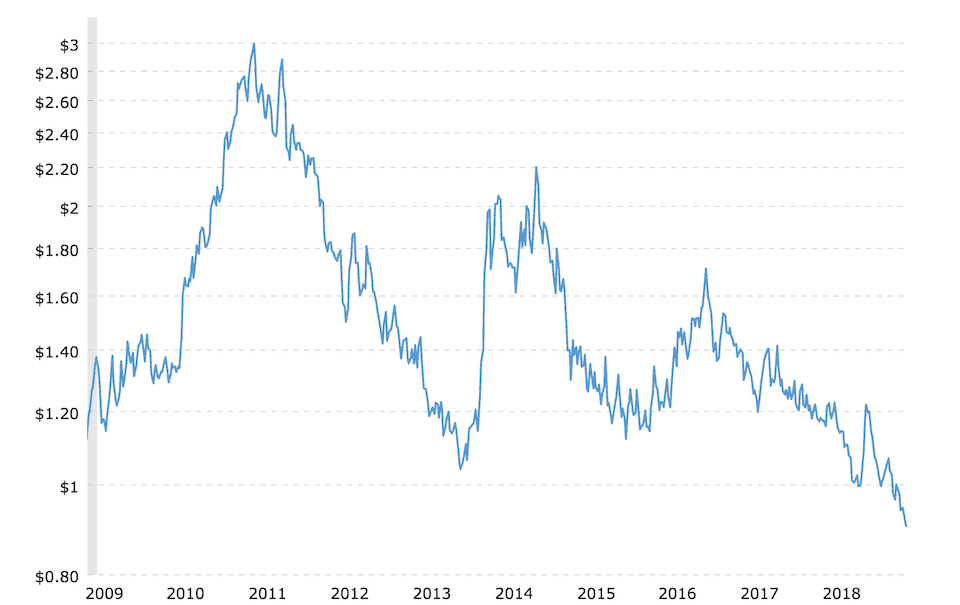
The oldest cat ever drank coffee every day
Creme Puff, a cat owned by Texas man Jake Perry, drank coffee mixed with cream every day and lived to be 38 years old. (Fifteen years is average for most cats.) Perhaps significantly, the second oldest cat ever recorded also belonged to Perry and also drank coffee every day. Granpa died at 34.
Harvard scientists have linked coffee with longer life
A 2018 study out of Harvard showed that people who drink up to eight cups of coffee per day may slightly lower their risk of early death when compared with those who don’t drink coffee.
Starbucks has 33,000 locations in the world
As of early 2021, Starbucks had 32,938 stores in the world. By comparison, there were about 10,000 Dunkin Donuts and 4,300 Tim Hortons.
It takes 71 coffee beans to make an espresso
A coffee bean weighs about 0.1134 grams. Baristas use about eight grams of ground coffee for a single shot of espresso. Do the math and it works out to just under 71 beans per shot.
One black coffee contains two calories
You might feel energy after drinking coffee, but that’s the caffeine talking because black coffee contains very little actual energy: only two calories per cup. That changes when you start adding milk and sugar.
Small farms produce 60 per cent of the coffee
Enveritas estimates that there are 12.5 million coffee farmers in the world who hold less than five hectares of land, and they produce 60 per cent of the coffee. Twenty-one per cent of coffee comes from large farms of more than 50 hectares.
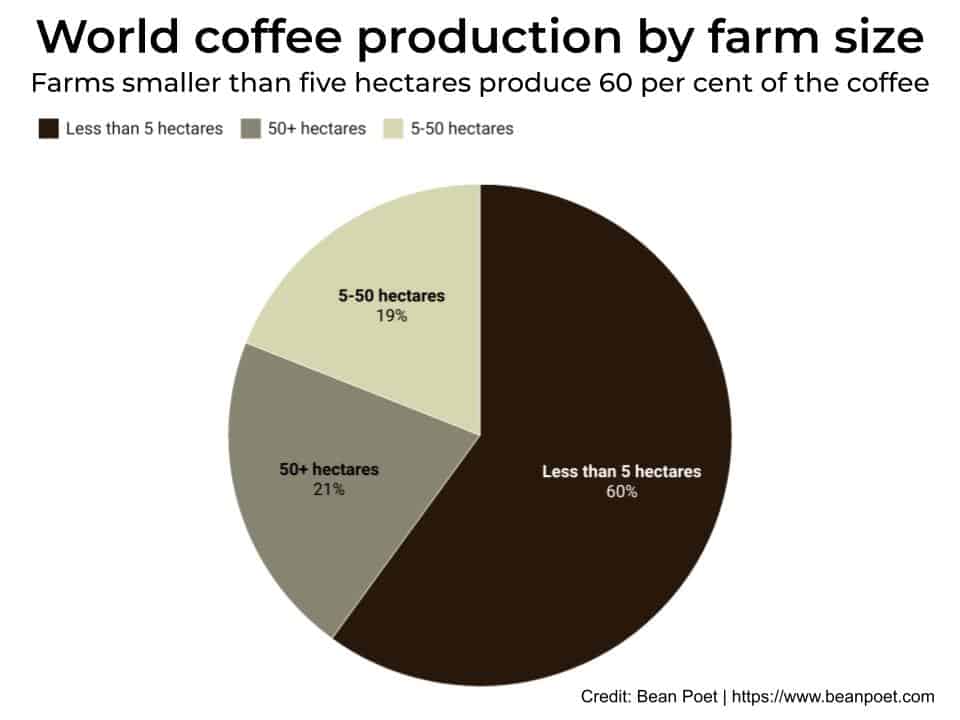
Maxwell House’s disputed slogan
Former U.S. President Teddy Roosevelt has been credited with coining Maxwell House’s famous slogan, “Good to the last drop” after sipping a cup of coffee during a 1907 visit to Nashville. However, a newspaper article from the time quotes him as saying, “This is the kind of stuff I like to drink, by George, when I hunt bears,” which isn’t quite as catchy a slogan.
Decaffeinated coffee is not caffeine-free
A typical cup of decaf contains about 2 mg of caffeine, which is about two per cent of what you’ll find in a cup of regular coffee. A 98-per-cent caffeine reduction is still pretty good.
You can overdose on caffeine
A dose of caffeine exceeding more than 150-200 milligrams per kilogram of body weight is considered lethal. Converting to U.S. measurements, if you weigh 155 pounds, it will take between 77 and 103 tall cups from Starbucks (12 oz.) to kill you.
A coffee plant produces one pound of beans per year
They take three to four years to mature, and when they do, a coffee plant’s yield is about one pound of beans per year. That’s about 3,250 individual beans.
Japan was the first country to celebrate a coffee day
Japan promoted a “Coffee Day” as early as 1983. The U.S. got on board in 2005. The first International Coffee Day was in 2009. International Coffee Day is now celebrated annually by many countries around the 1st of October, although the date moves around a bit depending on the country.
Coffee grounds are a great exfoliant
Not only do coffee grounds hold up well when wet, they also contain caffeic acid which may boost collagen levels. Equal parts of coffee grounds and brown sugar can be mixed with fresh lemon juice to make an exfoliating rub.

Americans consume more than 200 billion cups per year
In 2018-19, U.S. coffee consumption was almost 27.16 million 60-kilogram bags. You get about 130 cups of coffee per kilogram, so after doing the math that comes out to 211.8 billion cups per year for Americans.
American coffee drinkers average 1,100 cups per year
Three cups per day is the standard for an American coffee drinker. About seven in 10 Americans drink coffee every week and 62 per cent drink it every day.
Women petitioned against coffee—or did they?
A Women’s Petition Against Coffee was published and circulated in London in 1674, alleging among other things that coffee was turning their lovers into “meager useless corpses.” Nobody knows the actual origins of the pamphlet, but coffeehouses were political hotbeds at the time so somebody may have been trying to discourage their popularity for political reasons.
A “cup of Joe” refers to a Navy boss
You used to be able to drink booze on a navy ship, until Josephus “Joe” Daniels came along. Daniels, secretary of the U.S. Navy, banned alcohol on navy ships in 1914, just before the First World War. Instead, the crew had to drink coffee, which they referred to as a “cup of Joe.”
Olympics have no caffeine limit, but NCAA does
Caffeine is currently being monitored by the World Anti-Doping Agency in case the need arises to ban it from competitions like the Olympics as a performance-enhancing drug. But it is allowed. In the NCAA, however, an athlete will find herself in trouble if a urine test produces a concentration of more than 15 micrograms per milliliter. That would take 6-8 cups of coffee, 2-3 hours before an event.
Coffee has 99 flavors
When coffee snobs describe what they taste in a cup of coffee, they have 99 descriptors to choose from. Those were settled on by sensory scientists working with the Specialty Coffee Association on an updated version of the Coffee Taster’s Flavor Wheel in 2015.
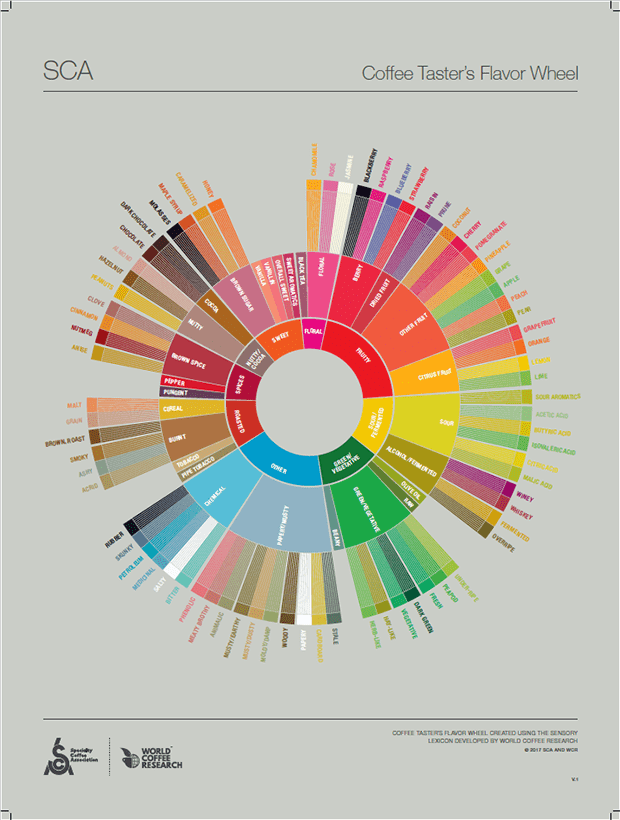
A quarter of all coffee consumed is instant coffee
Count us firmly among the three-quarters who drink proper coffee, but instant coffee makes up about 25 per cent of all coffee consumed worldwide.
Coffee must continue, even in a pandemic
A study by the National Coffee Association found that the percentage of coffee drinkers who brewed coffee at home jumped to 85 per cent in 2021, from 78 per cent just before the COVID-19 pandemic.
Brazil has 220,000 coffee farms
Coffee plantations cover about 27,000 square kilometres of Brazil, which is 10,400 square miles or an area the equivalent of the entire state of Hawaii.
Beethoven’s coffee recipe
Composer Ludwig van Beethoven was famous for—well, that fifth symphony I guess—but also for insisting that exactly 60 beans be used to brew his coffee. He counted them himself by hand.
Coffee plants can live up to 100 years
They might hit the century mark, but coffee plants typically produce coffee beans for only about half that time. Their most productive years are between age seven and 20.
Coffee isn’t the only caffeinated plant
Coffee’s the most famous, but approximately 60 plants naturally contain caffeine. They include cocoa beans, kola nuts and tea leaves.
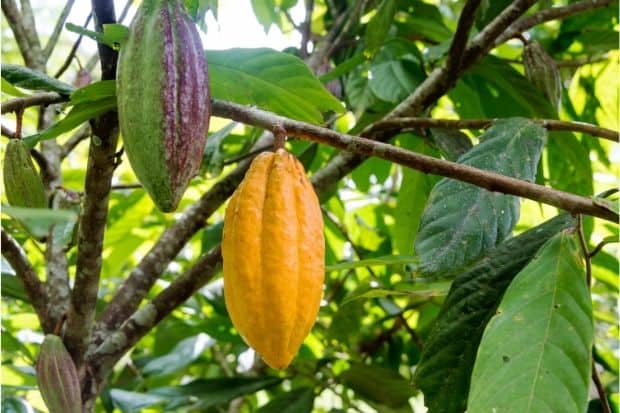
There are almost 1.7 million coffee jobs in the U.S.
Research commissioned by the National Coffee Association found that the coffee industry is responsible for 1,694,710 jobs in the U.S. and nearly $225.2 billion in total economic impact in 2015.
The U.S. imports 3.3 billion pounds of coffee a year
The U.S. is the world’s second biggest coffee imported, behind only the European Union (which is way ahead of everyone). The U.S. imported 25 million 60-kilogram bags in 2021-22, or 3.3 billion pounds.
Japanese coffee shops are called kissatens
Japanese kissatens started as tea houses but became known for coffee as well beginning the 1920s. They differ from cafés in their permits, which allow them to serve food, coffee and tea but no alcohol. A café may also serve alcohol.
A U.K. man drank a cup of coffee in 3.66 seconds
Luke Ibbetson set a new world record for fastest consumption of a cup of coffee when he downed one on Dec. 5, 2020 in just 3.66 seconds. We’ve seen British rugby players down pints of beer quicker than that, but that’s another story.
Starbucks was founded by two teachers and a writer
These days Starbucks is about as corporate as corporations get, but it was founded in 1971 at Pike Place Market in Seattle by two teachers—Zev Siegl and Jerry Baldwin—and a writer named Gordon Bowker. Howard Schultz came later.
Caffeine from decaf is sold to make soft drinks
Companies that produce decaffeinated coffee don’t let all that caffeine go to waste. A lucrative market exists among soft drink companies and energy drink companies, which then purchase the raw caffeine that has been stripped from the coffee.
A song about coffee made the Top 20
The Ink Spots’ 1940 recording of “Java Jive” made it to No. 17 on the U.S. pop charts. The lyrics open with the words, “I love coffee…” Should have gone to No. 1 if you ask us.
Espresso is four times as fat as coffee
The fat content of brewed espresso is about 2.5 per cent, while regular drip coffee is about 0.6 per cent. This is because espresso is an emulsion of stratified oils.
Caffeine takes 15 minutes to kick in
When you drink a cup of coffee, you should begin to feel the effects of the caffeine within 15 minutes (before you finish the cup, if you’re a slow drinker). It peaks after one hour, and takes approximately six hours to disappear by half. Ten hours should eliminate it from your system.
Colombia brewed the world’s largest cup of coffee
The record for largest cup of coffee, as of March 2022, is held by Colombia, which brewed a 22,738.14-litre cup on June 15, 2019 to wrestle the record away from Honduras. Fifty people worked for a month on the project.
New record: Largest cup of coffee – 22.739 litres. Congratulations to Alcaldía Municipal de #Chinchiná at Parque de Bolivar, Caldas in Colombia ☕️ ?
The city then went on to host the largest coffee tasting, with 1559 participants! pic.twitter.com/fZmVCR8mO4
— Guinness World Records (@GWR) June 17, 2019
Coffee trivia questions
If you’ve read carefully, you shouldn’t have any trouble with these coffee trivia questions. Feel free to challenge your co-workers, or bring it along to your next game night.
1. Which company turned their coffee filters into face masks during the COVID-19 pandemic of 2020?
a) Bunn
b) Hario
c ) Melitta
d) Mr. Coffee
2. At which university was video of a coffee pot transmitted by the world’s first webcam?
a) University of Cambridge
b) Harvard University
c) University of Oxford
d) Yale University
3. How much water does it take to grow enough beans to produce one cup of coffee?
a) 4 litres
b) 14 litres
c) 40 litres
d) 140 litres
4. What portion of the world’s coffee is grown in Brazil?
a) 10%
b) one third
c) half
d) three quarters
5. For how long has Brazil been the world’s top coffee-producing country?
a) 30 years
b) 70 years
c) 102 years
d) 168 years
6. When did England get its first coffeehouse?
a) 1066
b) 1652
c) 1880
d) 1913
7. Which English monarch banned coffeehouses?
a) Elizabeth I
b) Charles II
c) George III
d) Victoria
8. Which revolution was plotted in a coffeehouse?
a) American
b) French
c) American and French
d) Russian
9. Starbucks opened its first cafe in 1985 under a different name. What was it?
a) Macchina
b) Il Giornale
c) Colazione
d) La Sirena
10. The plant that produces coffee has its origins in which country?
a) Colombia
b) Indonesia
c) Brazil
d) Ethiopia
11. Which of the following is NOT widely considered a linguistic ancestor of the word “coffee”?
a) koffie
b) quatchi
c) kahve
d) qahwah
12. From which animal’s feces does the world’s most expensive coffee come?
a) elephant
b) ferret
c) red panda
d) civet
13. Which famous composer wrote a comic opera about a young caffeine addict whose father tries to come between her and her coffee?
a) Beethoven
b) Bach
c) Brahms
d) Mozart
14. What are the only U.S. states that grow coffee?
a) California and Hawaii
b) Hawaii and New Mexico
c) Florida and Hawaii
d) Florida and New Mexico
15. Which instant coffee brand has published a book of Passover prayers and hymns since 1923?
a) Douwe Egberts
b) Folgers
c) Nescafe
d) Maxwell House
16. The first documented evidence of coffee consumption comes from monasteries in which country?
a) Yemen
b) Myanmar
c) India
d) Vietnam
17. “Mocha Java” is named after two places. In which countries are those places?
a) Saudi Arabia and Indonesia
b) Italy and Fiji
c) Yemen and Indonesia
d) Turkey and Papua New Guinea
18. Which Central American country set a Guinness World Record in 2018 for brewing the world’s largest cup of coffee?
a) Nicaragua
b) Costa Rica
c) Honduras
d) Panama
19. After Brazil, which country is the world’s second biggest coffee producer?
a) Colombia
b) India
c) Kenya
d) Vietnam
20. Which country drinks more coffee per capita than any other?
a) Canada
b) Finland
c) Italy
d) United States
21. Which chain of coffeehouses has a branch in the CIA’s Langley, Va. headquarters?
a) Dunkin’ Donuts
b) Peet’s Coffee
c) Starbucks
d) Tim Hortons
22. The oldest cat who ever lived drank coffee and cream daily. At what age did the cat die?
a) 22
b) 28
c) 34
d) 38


